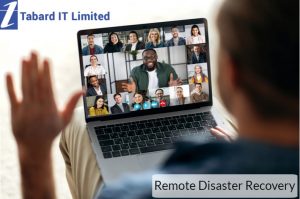The most important thing to have in place for remote disaster recovery planning is communication. When everyone is in the same office, it’s easy to walk over and ask a co-worker what they’re doing or if they need assistance. It’s not so simple when your company has employees working remotely. In this blog post, we’ll talk about how you can keep lines of communication open with some tried-and-true strategies for remote workers.
 In the past year, organisations have had to deal with a different set of challenges when it comes to disaster recovery. Many companies have had most or all of their employees to work from home and these employees used devices other than those provided by the company for work, causing security concerns.
In the past year, organisations have had to deal with a different set of challenges when it comes to disaster recovery. Many companies have had most or all of their employees to work from home and these employees used devices other than those provided by the company for work, causing security concerns.
There are many different ways to communicate with remote workers. One of the best ways to keep in contact is through video conferencing software, like Skype or Google Hangouts. Video chat allows your employees to see one another and communicate while also being able to share documents on their computer screens.
In addition, you can use instant messaging for individual chats that last a short time period (like checking if someone needs help). Have these conversations during office hours so they don’t interfere too much with day-to-day work schedules.
Finally, email is often used by company executives as a way of communicating frequently throughout the business day. Keep this communication brief but frequent – emails should be less than five sentences long each time and no more than three times per day at most.
– Establish a single location for employees to report emergencies. This should be a live phone line or an email address where people can share their status and the situation at hand securely, without fear of someone else listening in on the call.
– Plan out all remote work locations ahead of time so that your team knows which are available during disasters. Whether it’s meeting up at HQ or another office building close by, you need these details shared through company messaging channels like Slack or Basecamp as well as via word of mouth.
– Hold periodic meetings between co-workers and supervisors to discuss any changes since last year with regards to disaster recovery plans and other important topics related to how they’ll communicate when something happens, such as implementing new tools or procedures.
– Establish a clear code of conduct on remote conference calls so that everyone understands what’s expected and knows how to take action in the event that an emergency is taking place.
– Be mindful about your tone when communicating with colleagues remotely, as it can be hard to read emotion from someone who doesn’t have vocal inflection or body language cues for you to rely on.
– Keep lines clear while working remotely: Plan out all locations ahead of time; Meet periodically with co-workers/supervisors;
These are just some of the different ways to be mindful of your communication with colleagues and how it can affect your ability to plan for an emergency.
For further advice on disaster recovery plans for remote working speak with our IT consultants at Tabard IT on 0131 339 9448. You can also find a wide range of IT support tips and guides featured throughout the website which covers common IT issues and more.
